Are you planning to visit Svalbard one of these days? There is so much mystery around Spitsbergen and the Norwegian Arctic destination. These Svalbard travel tips will help you out!
If youʻre booking your trip to Svalbard last minute, we have you covered. Below are some of the top tours, and more!
🐋 Top summer activities in Svalbard:
- Speedboat tour to walrus colony (one of my favorites!)
- Nature and wildlife tour on a boat (a Svalbard top-seller)
- Wildlife photography tour (not a boat tour, but it’s awesome)
❄️ Top winter activities in Svalbard:
- Snowmobile to the land of the polar bear (Feb-May topseller!)
- Northern lights snowmobile trip (Dec-Mar; top aurora tour)
- Historic coal mine tour at Gruve 3
🛌 Top hotels and places to stay:
- Haugen Pensjonat Svalbard (my FAVORITE place to stay!)
- Radisson Blu (good base for activities!)
- Coal Minerʻs Cabins (budget option, further from town)
So, where exactly is Svalbard? It’s so funny to see Svalbard becoming a popular travel destination because I have known about it for many years, and I even visited Svalbard before it became trendy and slightly more ‘commercialized’ (I lived in Norway).
For that fact, it is also a bit scary to see tourism flock there in larger numbers in an attempt to see polar bears. There is a lot more to Svalbard than polar bears, trust me.
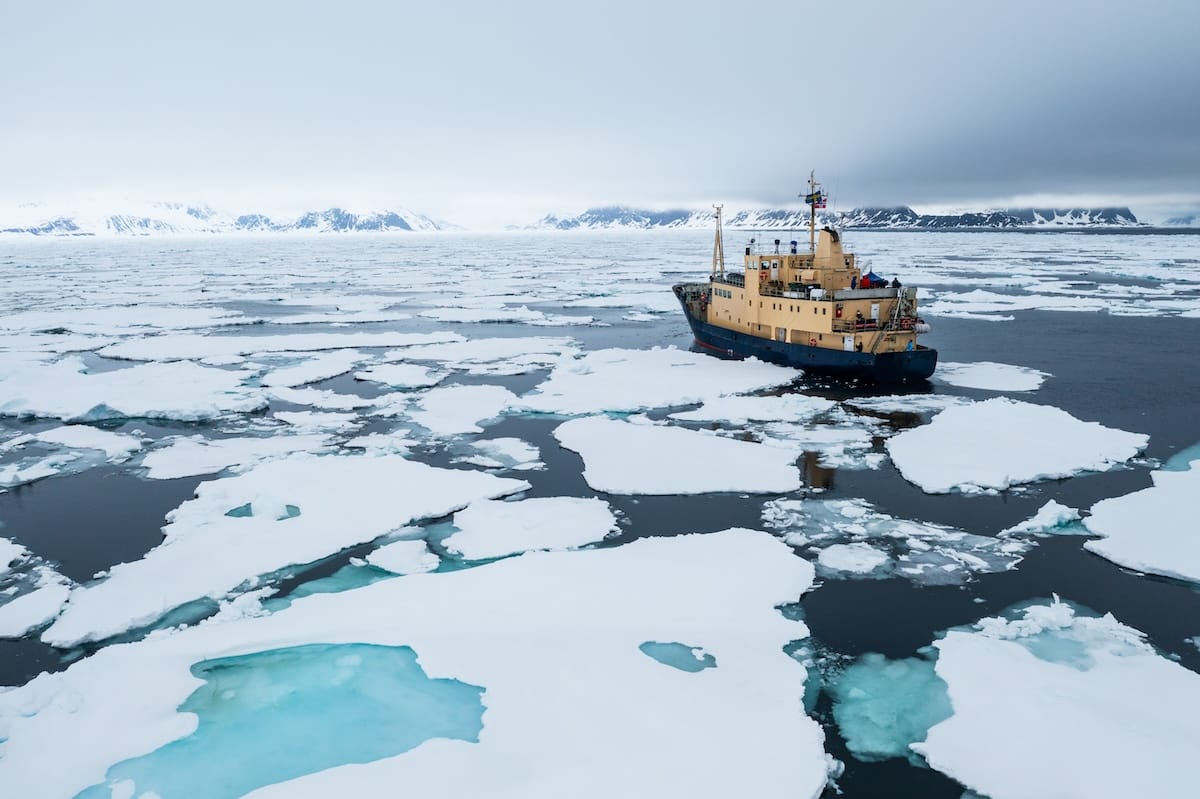
This is a guide for those who are truly interested in visiting Svalbard, for whatever reason. This isn’t to encourage larger numbers of travelers to go there, per se.
Traveling to Svalbard can leave footprints behind on one of the most sensitive ecosystems on the planet, so please ensure you don’t leave extra traces behind and are socially and environmentally conscious when you are there.
In this post...
About Svalbard
Pretty much everyone knows the same thing about Svalbard: it has polar bears. Yep, this is true, and the myth has it that there are more polar bears than people (quite false, but tourism will state anything). But there are many things to do in Svalbard that don’t involve polar bears.
Svalbard also has walruses. And Arctic foxes. And NARWHALS. I haven’t seen a narwhal yet, however. They are pretty rare to spot up this way.
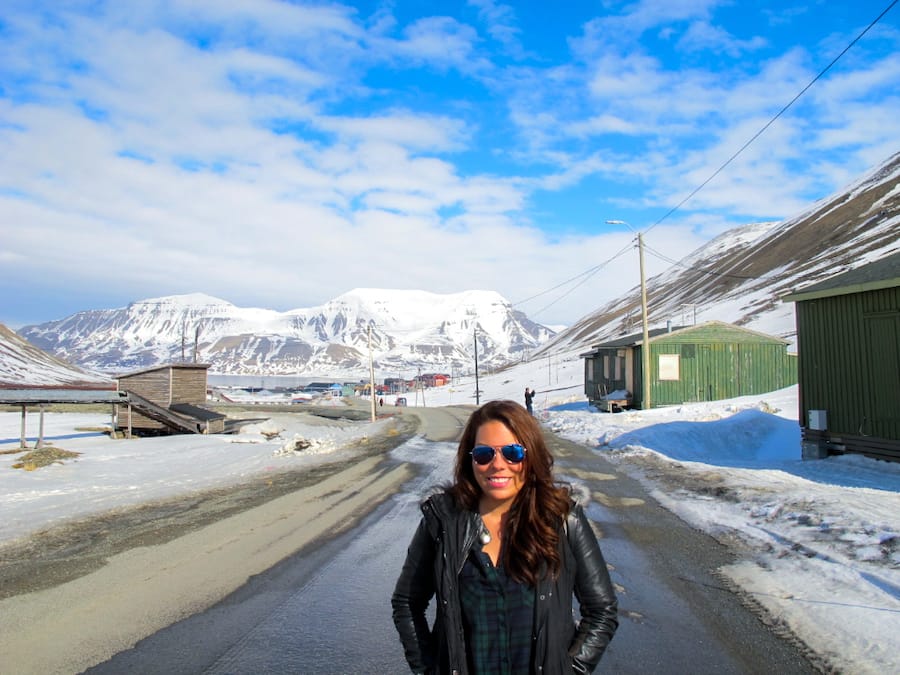
Okay, but really, Svalbard is the most beautiful place I’ve ever traveled to. It is humbling and remarkable, and it is home to the most national parks in Norway, as well as over 2,100 glaciers.
This section will detail a bit more about this area in the far north, an area that is a mere 650 miles (1046 kilometers) or so from the North Pole.
History of Svalbard
The economy of Svalbard is fueled by tourism, research, and mining. You will see all three on your trip there. Svalbard was established as an economic-free zone and demilitarized zone in the 1920s per the Spitsbergen Treaty and the Svalbard Act.
As a shock to us all, the Nazis didn’t get the memo and set up shop in Svalbard. They later destroyed pretty much every settlement up there. In the 1940s, after the leveling of the villages in Svalbard, the USSR proposed that the territory become a condominium.
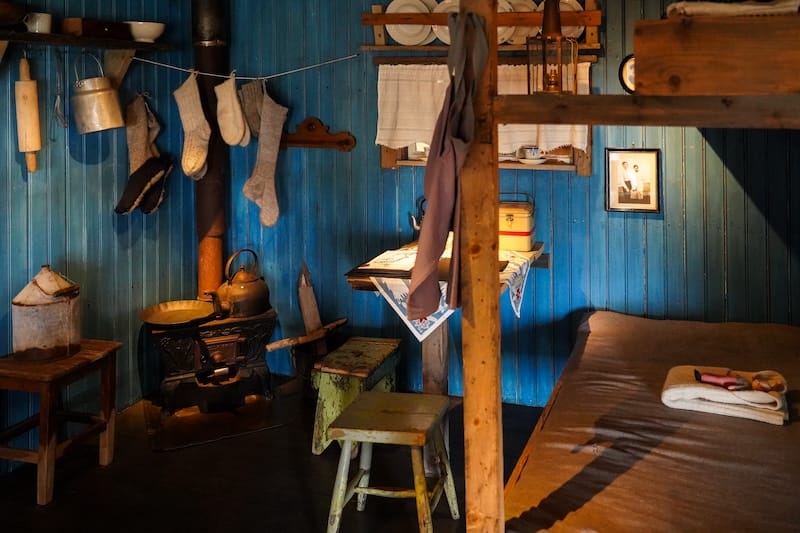
Long story short, Svalbard ended up becoming normalized, and Longyearbyen was no longer just a place that miners would come to work from.
Today, Russia still has a presence on Svalbard, mainly in Barentsburg, and Svalbard is owned by Norway, although it is still a sovereign territory.
Svalbard or Spitsbergen?
Is it Svalbard or Spitsbergen? Well, they aren’t the same thing. Svalbard refers to the entire archipelago, while Spitsbergen refers to just the island where Longyearbyen and the other main settlements are located.
Nine main islands make up Svalbard. They are Spitsbergen (the largest), North East Land, Edge Island, Barents Island, Prins Karls Foreland, Kvit Island (Gilles Land), Kong Karls Land (Wiche Islands), Bjørn (Bear) Island, and Hopen.

The likelihood that you will leave Spitsbergen during your trip is rare unless you’re a researcher or have business elsewhere.
If you want to see a documentary about Bjørnøya (Bear Island), you can check out this one about the Wegge brothers from Norway who lived and surfed there for 9 months.
Global Seed Vault
If you know about the Global Seed Vault, you probably know about Svalbard. I’m finding that the only way people know of the territory is from polar bear documentaries on the BBC or because of the Global Seed Vault. Fair enough.
The Global Seed Vault is exactly as it sounds—a place where seeds are kept secure in Svalbard in case we destroy ourselves (which we will inevitably do) and need them to produce life again either on planet Earth or elsewhere.
It holds 1,059,646 deposits (it has the potential to store 4.5 million!) and as noted on the website, the loss of a crop variety is as irreversible as the extinction of the dinosaurs.
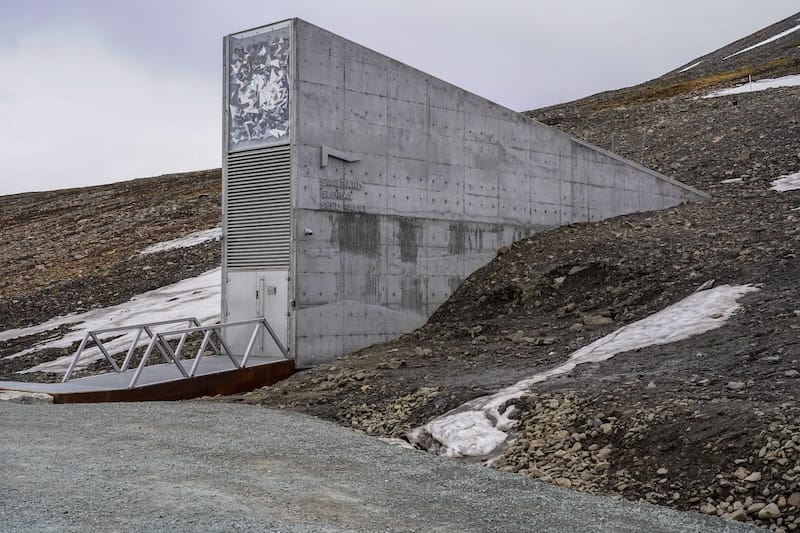
Svalbard’s Global Seed Vault is buried deep into a mountain and in the permafrost, offering a natural method for keeping these seeds secure and ready for use at any moment humanity will need them.
Unfortunately, the Global Seed Vault has already had its first ‘withdrawal’ as a result of the war in Syria.
Climate Change and the Global Seed Vault
Won’t climate change melt the permafrost that led the Global Seed Vault to be built there in the first place?
Yes. In 2016 and 2017, the melting permafrost led to flooding in the entryway of the Seed Vault, resulting in a $13 million renovation to make it more waterproof in 2018.
No seeds were damaged at the time, but there was significant damage to other parts of the structure. The $13 million price tag was double what was spent to create the Global Seed Vault in the first place.
Barentsburg (Little Russia)
The second-largest settlement on Spitsbergen is Barentsburg, also known as “Little Russia”. There are just under 500 residents there, and it is mostly Russians and Ukrainians calling Barentsburg home these days.
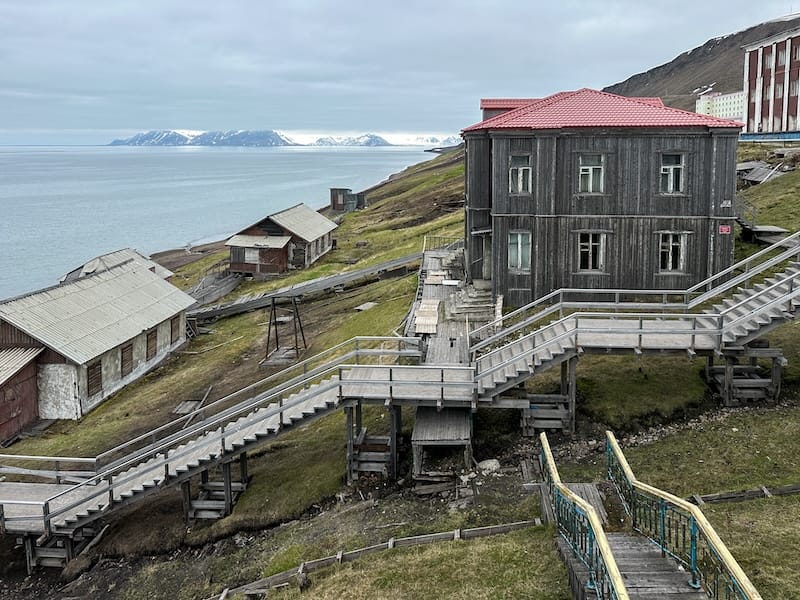
Due to the terms of the 1920 Svalbard Treaty, Russia has the right to remain in Svalbard to exploit the natural resources that exist there. There are mining operations in and around Barentsburg. There is still a Lenin statue in Barentsburg.
The largest aviation crash in Norwegian history occurred with a crew coming from Moscow onboard Vnukovo Airlines Flight 2801 to Svalbard (residents and workers of Barentsburg) in 1996. The plane crashed near the Adventfjorden, resulting in the loss of 141 lives.
Barentsburg is 34 miles (55 kilometers) away from Longyearbyen, and there are no roads that connect the two settlements. The best way to get there is via a snowmobile, boat, or helicopter.
Pyramiden (Abandoned Russian Mining Settlement)
My reason for visiting Svalbard initially had nothing to do with polar bears and everything to do with visiting Pyramiden, an abandoned Russian mining town on Spitsbergen that was settled by the Swedes in 1910 and later sold to the Soviets in 1927.
The town was abandoned in 1998 and left to the polar bears. While this town may seem abandoned, it isn’t these days. In 2013, the Pyramiden Hotel underwent a renovation and is open seasonally from March until October.
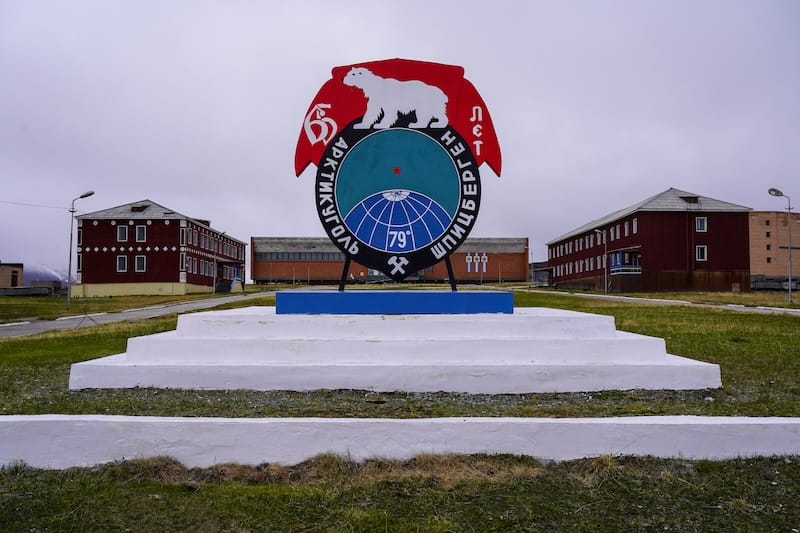
The hotel has 43 rooms, a restaurant, and a souvenir shop. The restaurant has breakfast, lunch, and dinner. You can see their website to find out additional information.
Pyramiden is quite the hike from Longyearbyen, however. The best way to reach it during the winter is via a snowmobile.
In summer, there are boats such as the Billefjord or PolarGirl that go there.
Svalbard is Diverse
There are several nationalities living in Svalbard. It might surprise you, given the small population (2,642 people in total).
Longyearbyen is the largest settlement in Svalbard, with a population of 2,368 people. The next largest settlement is Barentsburg (471 people), Ny-Ålesund (35 people), etc. Svalbard is home to the northernmost settlements in the world.
There are NOT More Polar Bears Than People in Svalbard
You have probably heard that there are more polar bears than people on Svalbard. This is not entirely true. All of the towns you’ll visit are on Spitsbergen (an island in Svalbard), and there are only 250–300 polar bears on that island.
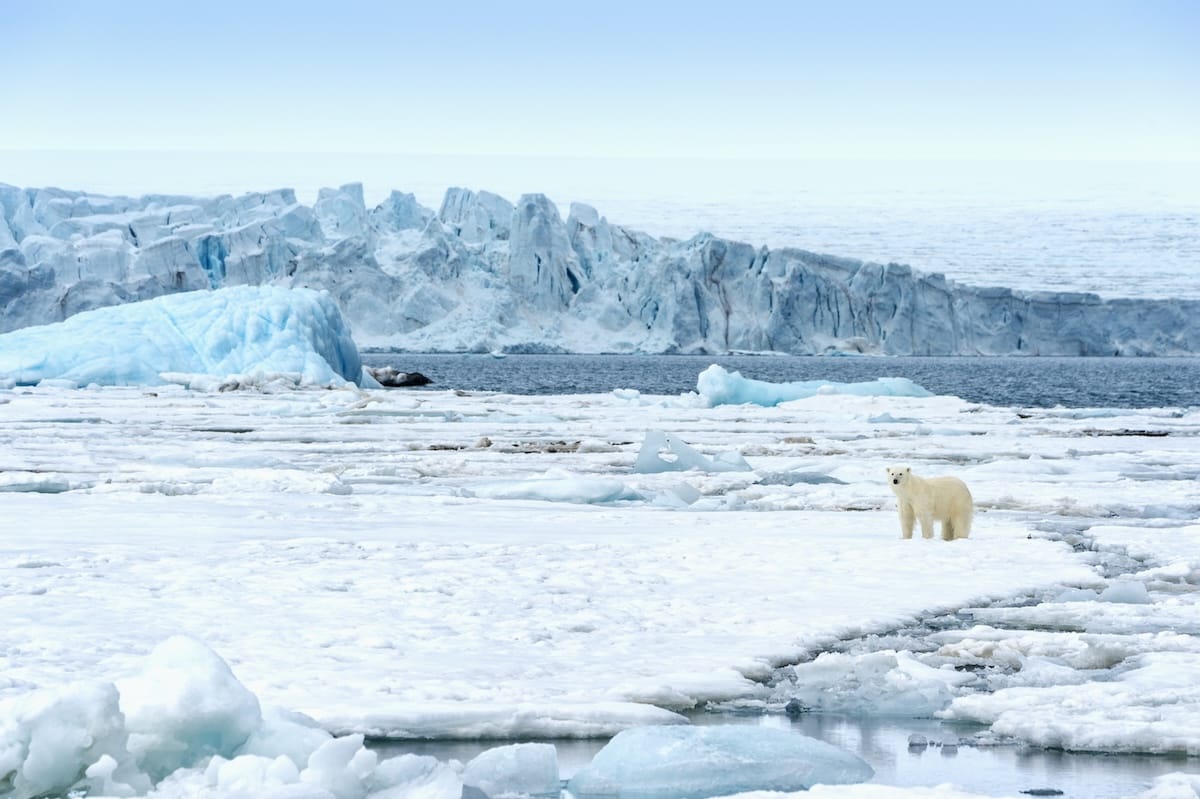
Nevertheless, it is highly illegal to disturb or mess with the bears. You will likely not see them when they are there anyway, but if you do and you provoke them, you will face major consequences.
Polar Bear Safaris are Illegal
The beautiful polar bear is an endangered animal, and therefore, chasing them down for human pleasure is illegal. Polar bear safaris and chases are not permitted; however, you can still see them on tours in Svalbard.
But there is no guarantee, so please don’t be immature and write a lousy review for these companies because your lifelong dream of seeing a polar bear in the wild wasn’t fulfilled.
You Must Carry a Gun Outside of Longyearbyen
If you’re heading outside of Longyearbyen, you should be with a skilled guide. If you’re doing something else and are on your own or with an independent group, you must be armed for your protection.
You can rent a game rifle (7.62, 30.06, or 308 calibers) and a signal pistol to protect yourself from the bears, but you must have a permit to obtain a weapon (buying or renting). Click here for more information about renting a weapon in Svalbard.
Other Svalbard Wildlife
There are more than just polar bears in Svalbard. There is a cool and diverse range of wildlife there, and it blows my mind and makes me want to return!
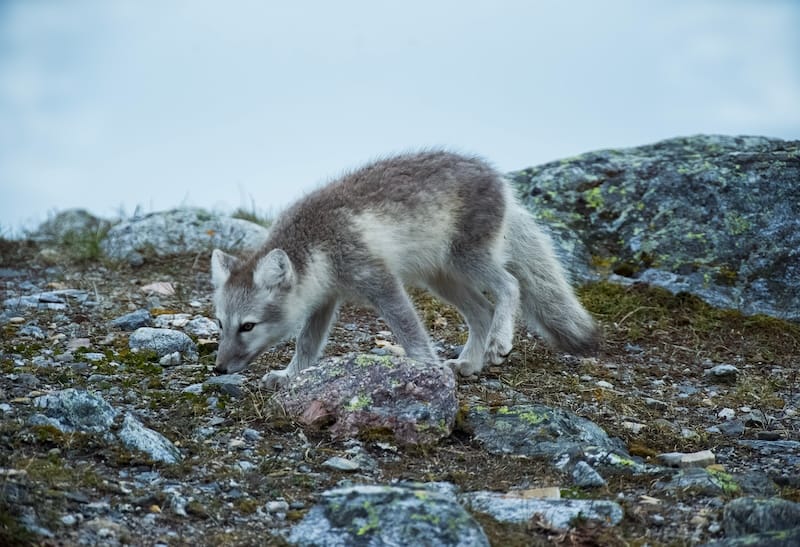
Some other wildlife in Svalbard includes, but is not limited to, Arctic foxes, walruses, ringed seals, reindeer, narwhals, beluga whales, Arctic terns, and the Svalbard rock ptarmigan. What a list!
No Cats in Svalbard
Because the domestication of cats has wiped out 2/3 of bird species on the planet, Svalbard has banned bringing them to the archipelago to protect the native bird species, calling the islands home.
Walruses in Svalbard
Unlike polar bears, the walruses in Svalbard are thriving in terms of population and numbers after being hunted to near extinction in the 1970s and 1980s.
There were only about 100 in Svalbard in 1980. Now, there are an estimated 2,000 of them in and around Svalbard.
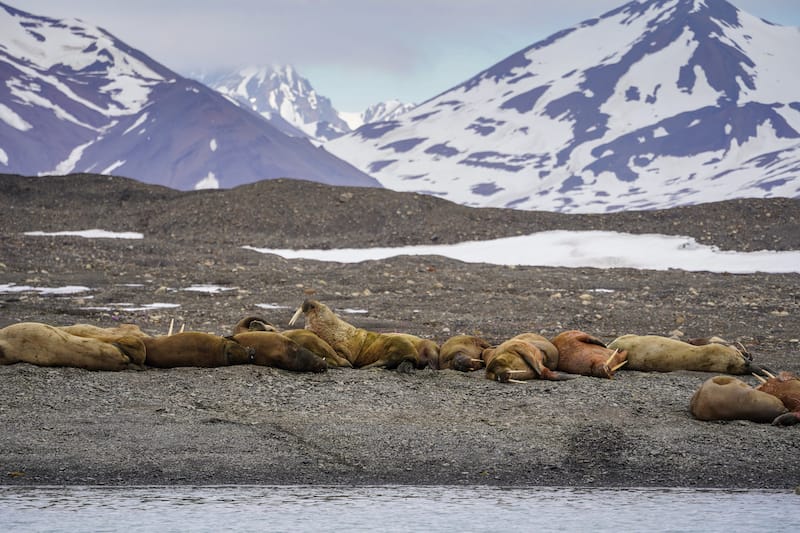
There is a tour you can take to visit a walrus colony not too far outside of Longyearbyen. The tour is super affordable compared to many other wildlife tours, and you will venture by speedboat to Borebukta, a popular hangout for the walruses on Svalbard.
You also have the chance to see puffins along the way. This might just be the perfect tour. I took it in June 2023 and loved it.
>> Click here to check rates and availability for a walrus tour
Climate Change on Svalbard
Ugh, the dreaded topic that I want to avoid but simply can’t. Instead, I’ll give you some reading material to educate yourself on climate change’s impact on Svalbard.
Climate change is real, and Svalbard is being impacted more than many places on Earth. The impacts are affecting wildlife, most notably, and it is something we should fear. Svalbard is on track to warm by 10°C by 2100.
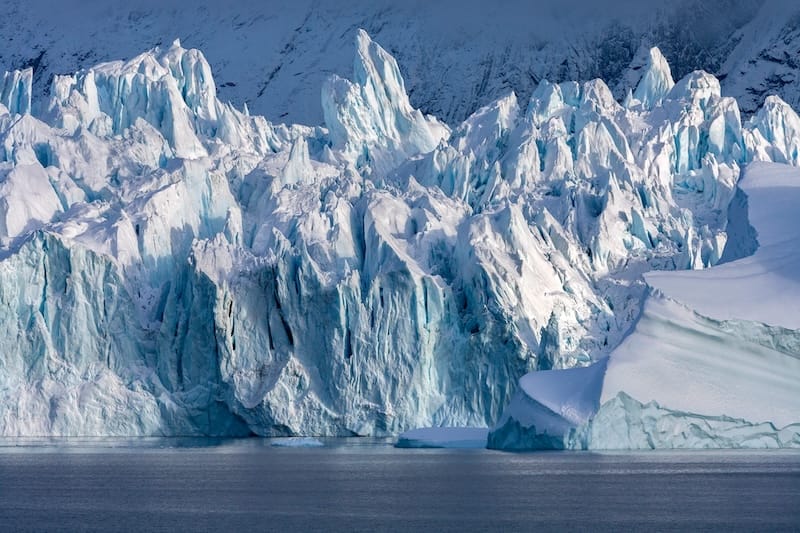
Here are some articles where you can read more. They are a mixture of mainstream media and scientific research:
- Climate in Svalbard in 2100 (Norwegian State Environmental Authorities – January 2019)
- Svalbard: The race to save the fastest-warming place on Earth (BBC – October 2022)
- How climate change is threatening a remote town nestled in the Arctic Circle (PBS – April 2023)
- The Melting Glaciers of Svalbard Offer an Ominous Glimpse of More Warming to Come (Inside Climate News – July 2023)
- Svalbard: the Arctic islands where we can see the future of global heating (The Guardian – May 2023)
So, is traveling to Svalbard ethical?
Morten Wedege, head of environmental protection for the governor of Svalbard, states that tourism numbers are not currently the problem as much as what the tourists are doing in Svalbard and which tour companies they are doing activities with.
He says to ensure you’re participating in Svalbard excursions and tours through the companies listed on the official tourism office’s website, as they all have certifications and adhere to the strict regulations (some of the toughest in the world) in place in Svalbard.
Every single tour I have listed on this guide, as well as any other Svalbard guide I have, meets these standards and is part of the umbrella company mentioned above by Wedege.
You can see the full list of companies recommended by the tourism officials here.
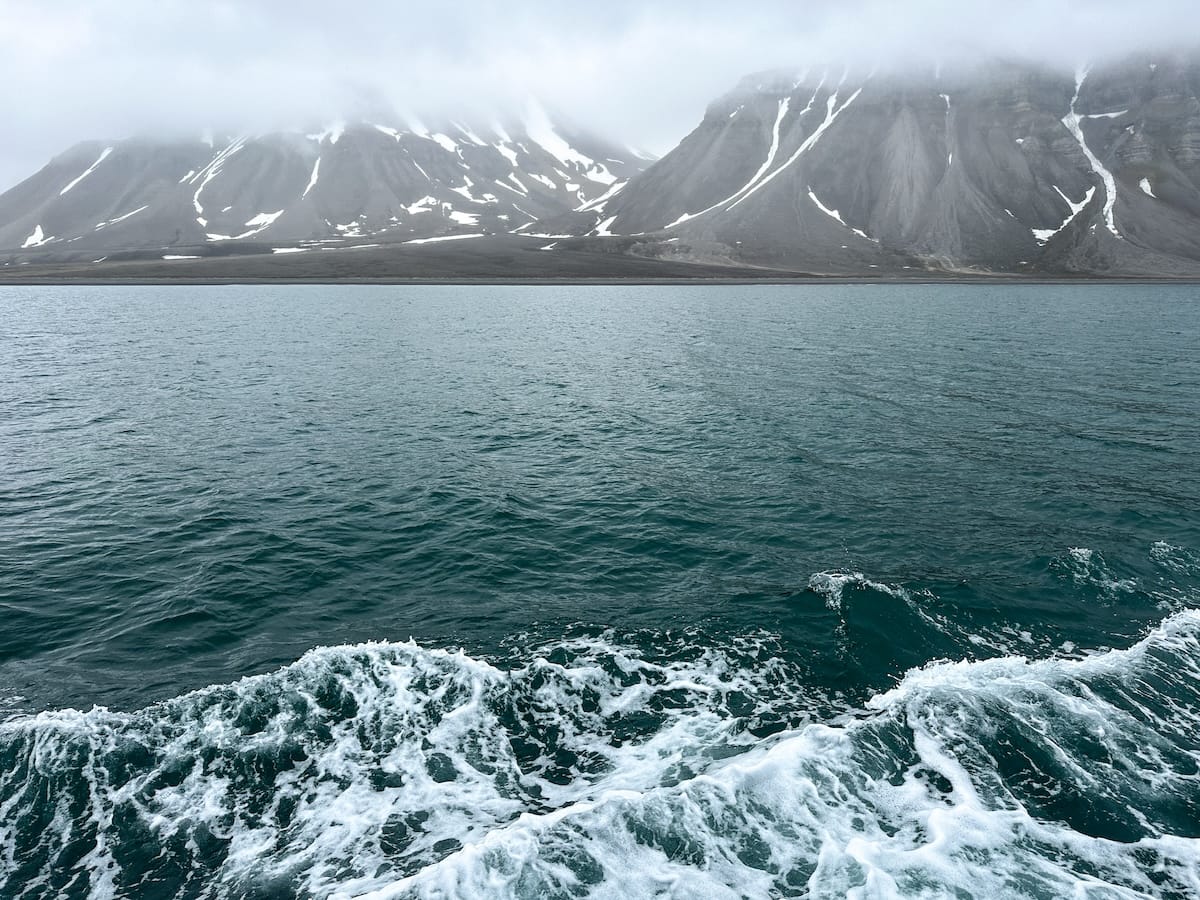
Visit Svalbard has been taking measures and action to help level things out there, too. They are promoting Svalbard winter tourism and northern lights tourism to ‘spread the wealth’, as I call it.
They are also really pushing urban tours and taking advantage of the world-class dining and other opportunities you have right in the town of Longyearbyen.
You can also grab a free bike at the tourism office, and they are encouraging tourists to stay in Svalbard longer and to take fewer trips in general. In addition, they are pushing trips that don’t require motors (dog-sledding, fat-biking, kayaking adventures, etc).
Svalbard Travel Tips for Your Trip
I will be detailing a variety of things throughout this guide—everything from Svalbard travel tips to things I thought were interesting from my time there to random facts. I will also include some practical information that I hope will help you prepare for your trip there.
If you have additional questions, please leave a comment or send me a message!
How to Get to Svalbard
The best way to get to Svalbard is to fly there. I mean, you could always opt for a super expensive cruise ship there if funds permit, but I know most of us don’t have the means to do that.
Flights to Svalbard have increased over the years, but there will never be too many as the archipelago can only hold so many travelers at one time. The infrastructure is simply not there.
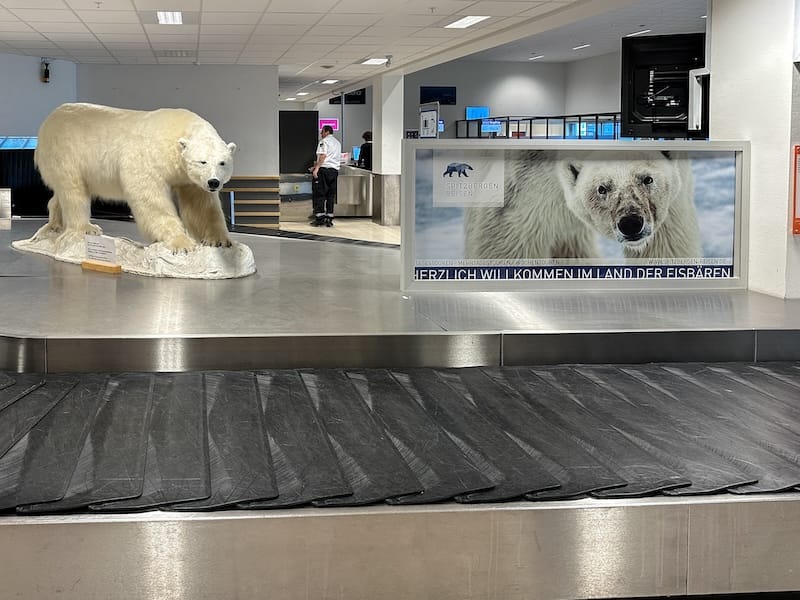
To fly to Svalbard, you will need to search for tickets to Longyearbyen (airport code: LYR). The only two commercial airlines flying there with year-round routes are Norwegian (via Oslo) and SAS (via Oslo and Tromso).
Getting from Svalbard Airport to Longyearbyen
You’ll arrive at the airport in Svalbard, marvel at the polar bear by the luggage carousel, and then want to find a way into the city. No fear, there is an airport bus waiting for you, and this is the first part of your Svalbard itinerary!
There are buses scheduled for every arrival at Longyearbyen Airport, and you will simply need to collect your luggage and head outside to it. It will depart after all suitcases have been dropped on the luggage belt.
Prices are as follows (current as of April 2024):
- Adults: 100 NOK (170 NOK round trip)
- Students: 70 NOK (120 NOK round trip)
- Children: 40 NOK (60 NOK round trip)
The bus stops at most accommodations in Longyearbyen; just inform the driver of where you’re headed, and he or she will ensure you make it there with no problems.
Getting back to the airport from Longyearbyen is also very easy. You will need to chat with your accommodation regarding the pickup point (it stops at most hotels, but the times are again pre-scheduled with the flights).
Click here to read more about the Svalbard airport bus.
You Don’t Need a Visa for Svalbard
Svalbard is completely visa-free to live and work for EVERYONE. This is always subject to change as the land becomes more popular and people start realizing that it exists.
You are, however, not entitled to healthcare or the welfare system of Norway unless you hold a Norwegian passport or are employed by a Norwegian company there.
One thing you should keep in mind is that if you will need to enter from mainland Norway. So, you will need to ensure transiting from Oslo or Tromso is visa-free for you or you will be required to get a visa.
Taxes in Svalbard
The taxes in Svalbard are lower than those on the mainland, making many goods cheaper and more affordable than in other parts of Norway. There is also no VAT (value-added tax) in Svalbard, which is pretty cool.
Where I found this noticeable was at restaurants and bars, more so than at the grocery store. I found most of the food at the grocery store in town to still be rather expensive, as they had to import the food up there.
25 Miles of Road
Svalbard has only around 25 miles (40 kilometers) of road. If your Svalbard plans include a road trip, I’d rethink it.
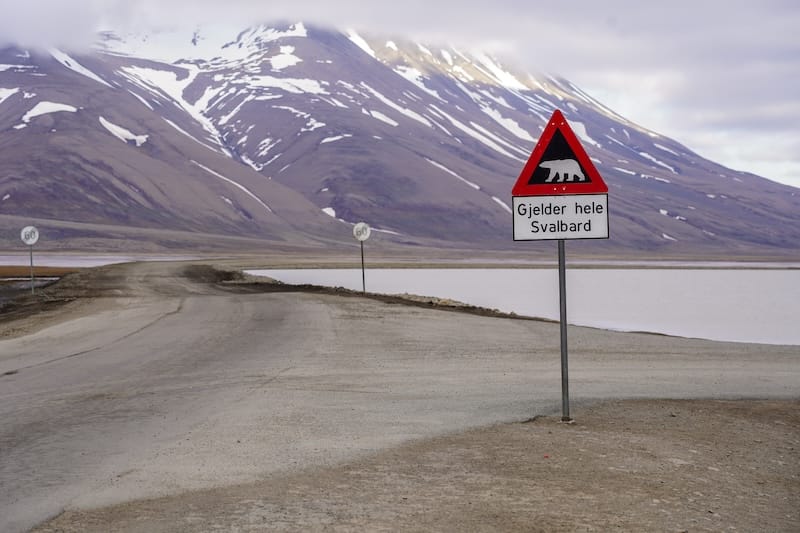
The best way to get around the island of Spitsbergen is to book some tours. The tours will take you on buses, boats, helicopters, snowmobiles, and more. But renting a car in Svalbard just isn’t a practical idea.
Renting a Snowmobile in Svalbard
You can rent yourself a snowmobile. To do this, you will need to go to Ingeniør G. Paulsen at Sjøområdet in Longyearbyen (open regularly, but the shop is closed on weekends) or contact them. You can see information, as well as daily rates, here.
They also offer other rentals, such as clothing, equipment, and weapons. You must rent or have a weapon with you if you venture into the wilderness beyond Svalbard.
If you’re super keen to go snowmobiling in Svalbard but can’t rent a snowmobile yourself, consider taking a tour! Several cool snowmobile tours in Svalbard will take you to some epic places.
When is the best time to travel to Svalbard?
Is there a best time to travel to Svalbard? I am not going to encourage going one season over another. But I will give some details below to allow you to pick your season based on your desires when visiting Svalbard.
Svalbard has three seasons, more or less. Summer is the warmest, of course, and has the midnight sun in its entirety. Summer in Svalbard is from May to September.
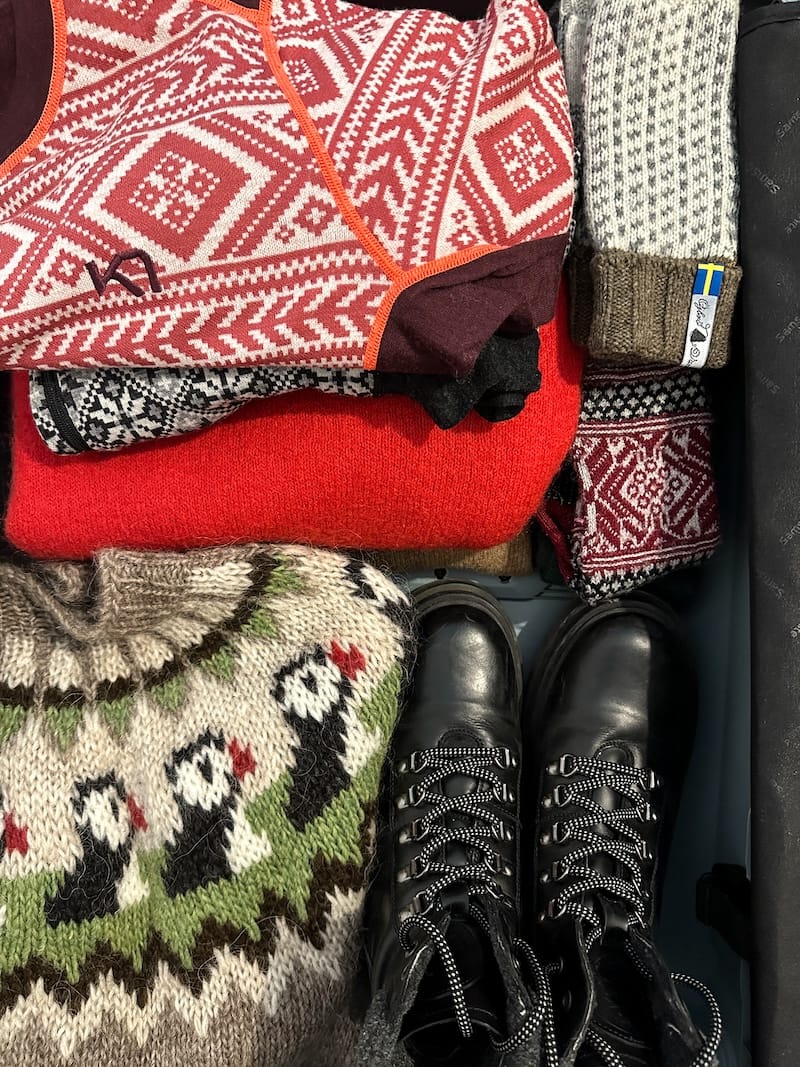
The second Svalbard season is the polar night season from October until February. This is the best time to go see the northern lights in Svalbard.
The last season in Svalbard worth noting is ‘spring’. It is the time from March until April when the sun is above the horizon and you can see the very evident transition into spring.
Best Month for Seeing Polar Bears in Svalbard
Polar bears do not hibernate. Pregnant females will ‘den’ during the winter months. So, you can see polar bears at any time of the year on Svalbard.
Your chances will increase if you are in Svalbard during the summer months and have the funds to take a boat around the shores of Spitsbergen. The thawed-out waters allow navigation through these channels, and the opportunity to see polar bears increases.
If I had to pick the best month to travel there for polar bears, I’d recommend visiting Svalbard in May. But, honestly, you can see one at any time (I saw one in September).
Can you see the northern lights in Svalbard?
Technically, yes. But is it the best place in Norway to see the northern lights? Not particularly.
Svalbard is located very far north, and it is not in the most optimal of locations to view the northern lights. They do come out, however, but don’t be surprised if you visit Svalbard during the polar nights in winter for a few days and never see them.
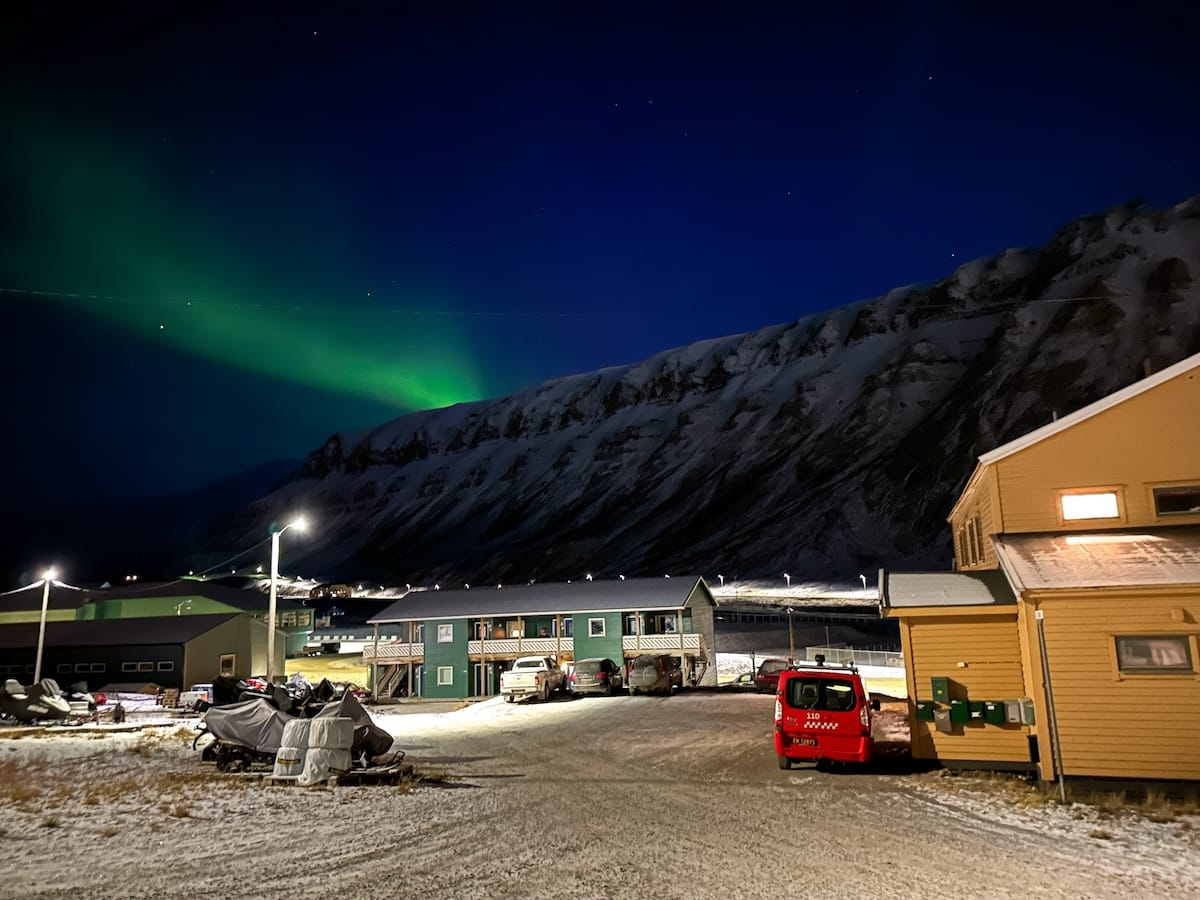
The best months to travel to Svalbard to see the northern lights are from October until April. I saw them in Longyearbyen at the end of September on a night when my aurora app said they were far south, so anything is possible.
Climate and Weather in Svalbard
The weather in Svalbard varies depending on the time of year you visit. During the polar nights and winter, you can expect temperatures in and around -16C (2F). During July, the warmest month in Svalbard, you will see average daily temperatures of around 5C (41F).
When I was in Svalbard in May and June (different trips), I was shocked at how warm it was there. I wore a light leather jacket with tights and boots with legwarmers. The midnight sun was already dazzling the Arctic, and I was never cold there.
But if you head out on boat trips, it will be cold! Dress warmly.
You Must Take Shoes off Inside Many Places
When you enter places in Svalbard, including hotels, you usually have to remove your shoes.
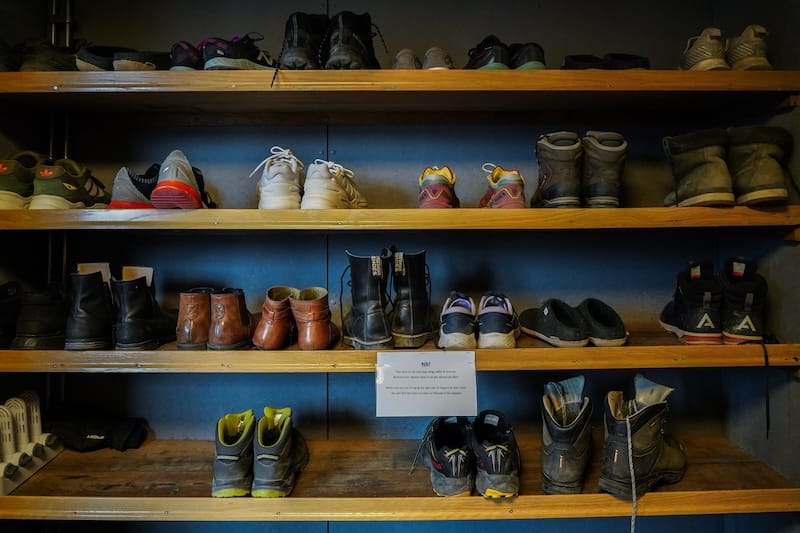
This is just a tradition from the mining era on Svalbard, but it is quite a good idea as shoes are filthy from rocks and sand in the summer months!
Shopping, Drinks, and Restaurants in Svalbard
This next section is just a compilation of tips for eating and drinking out in Longyearbyen. It will also include parts about shopping there and what to expect. I hope I cover it all but if you have questions, feel free to reach out!
Grocery Stores in Svalbard
There is pretty much one place to shop for groceries in Longyearbyen, and that is Svalbardbutikken (the Svalbard Store). This grocery store is more of a department store, as it has all kinds of odds and ends.
Svalbardbutikken recently expanded and has pretty much anything you need when it comes to food (and more). The produce is a lot better nowadays than it was on my first trip to Svalbard.

You can get decent cucumbers and bell peppers there, however, along with packaged cheese and freshly baked bread, so making sandwiches ‘Norwegian-style’ is quite easy.
Svalbardbutikken is open 7 days a week but opens much later on Sundays (3pm). If you take a day tour from Longyearbyen, beware that the shop closes early (6 or 7pm on most nights), and you may miss being able to go there that day.
Food Ingredients in Norwegian Cuisine
Most of what you’ll find in Longyearbyen is Norwegian-inspired or internationally-inspired. There is no large access to ingredients in these parts, but you will see many of the common Norwegian ingredients there.

Here is a list of commonly found ingredients in Northern Norwegian cuisine:
- Cod (torsk)
- Reindeer (reinsdyr)
- Whale (hval or hvalbiff)
- Salmon (laks)
- Dill (dill)
- Potatoes (poteter), carrots (gulrøtter), leek (purreløk), beetroot (rødbeter)
- Butter (smør) and bread (brød)
- Many types of berries such as blueberries (blåbær), cloudberries (multe), lingonberry (tyttebær), strawberries (jordbær), raspberries (bringebær), black currant (solbær), and red currant (rips)
Gluten-free, Vegan, and Vegetarian Food in Svalbard
If you’re a vegan or vegetarian, 99% of places will have an option for you. You can see on a menu if something is ‘vegansk’ (vegan) or ‘vegetarisk’ (vegetarian).
If you’re celiac or not eating gluten, just ask for ‘gluten-fri’ options when you’re at a restaurant. You will also see several gluten-fri options in Svalbardbutikken. Just ask as everyone speaks English.
Most restaurants in Svalbard will have menus in English so identifying products that are plant-based is usually extremely easy. If you’re heading on a tour, however, do let the tour leader or company know ahead of time.
Tipping in Svalbard
If you’re American, I know that this will certainly be a concern. In Norway, tipping is not common, but it is appreciated. You will find a diverse group of nationalities working in hospitality in Svalbard, and if they do a good job, reward them!
They make a good salary compared to other places, but tipping is appreciated if the service is good; it is just not expected. I recommend about 10% if it is good.
Tipping on tours is uncommon, however, and is pretty difficult as processing cards on a trip is challenging.
Beer in Svalbard
Believe it or not, you can find craft beer in Svalbard. And not just any craft beer, but a beer that is brewed on Spitsbergen.
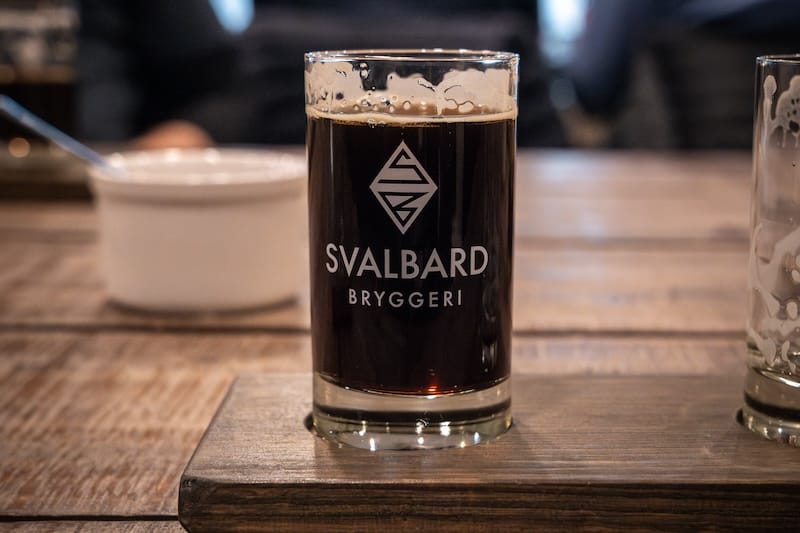
Founded by Robert and Anne Grete Johansen, Svalbard Brewery (Svalbard Bryggeri) is the world’s northernmost craft brewery. Brewed with minerals and water from a 2,000-year-old glacier called ‘Bogerbreen’, it is worth it to taste their portfolio of beers.
They also have brewery tours that can be booked on their website. I did one in September 2023, and it was a blast!
Practical Information for Visiting Svalbard
This next section is a bit random. A little bit of this and a little bit of that! These are some random facts and FAQs.
Credit Card or Cash in Spitsbergen?
You can use a credit card pretty much anywhere and there is no ATM or cash dispenser in Longyearbyen. You can pay for groceries, tours (although I recommend pre-booking to secure your place!), hotels, and restaurants with a credit card.
Purchasing a SIM Card in Svalbard
If you’re keen to purchase a SIM card in Svalbard, you will need to head to Svalbardbutikken in the Longyearbyen town center.
They will have various options for those traveling from abroad. But, as mentioned above, if you’re coming from mainland Norway or the EU, your SIM card should work without issues on Spitsbergen.
Wifi in Svalbard
Wifi is readily available in Longyearbyen and almost every cafe and restaurant will have access points. The hotels also have fairly speedy wifi considering you’re in a remote part of the world. The wifi up there is some of the fastest I have ever encountered.
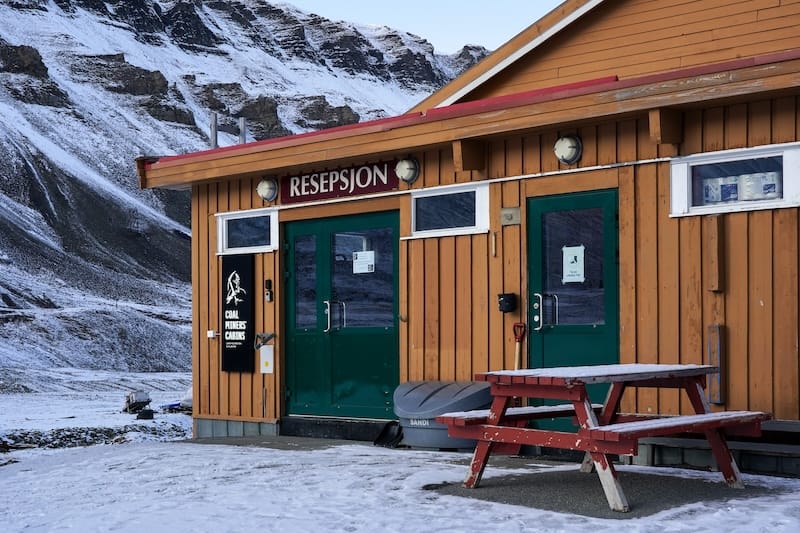
If you have a Norwegian SIM card or free EU roaming, you will have service on your phone in Longyearbyen, too.
Is Svalbard wheelchair-friendly?
Unfortunately, it is not the most wheelchair-friendly place in Norway, as many tours and excursions tend to require mobility.
There can also be harsher conditions in the winter, which make it more difficult to navigate the streets of Longyearbyen. But the buildings are mostly accessible, as are most hotels.
Another tip is to ensure that your hotel is in the center of Longyearbyen. I recommend staying at Radisson Blu, Svalbard Hotell Polfareren, or Basecamp Spitsbergen.
Basecamp has very limited accessible rooms, however. There is an elevator, but I think the two different styles of rooms I visited on the 2nd floor were not easy to move around. They have a few rooms on the first floor, though.
Alternatively, you can check out my list of the best hotels in Svalbard for more details.
Do you need a power adapter for Svalbard?
If you’re reading this, there is a good chance you’re from North America, the United Kingdom, or Australia… and YES, you will need a power adapter. Norway uses the usual European socket that you’ll find (except in the UK) with 220v.
My recommendation is that you buy a power strip for your home plug sockets and one single adapter for Europe. By doing this, you can charge all of your stuff from one place and only need to invest in one power adapter. It is much easier- trust me!
Should you visit Svalbard?
I do highly recommend booking a holiday to Svalbard, but please do it with due diligence. Svalbard does not have the capacity for mass tourism (and I don’t think Norway will allow it). Limited flights are going there and also a limited number of hotels on Spitsbergen.
On the other hand, it is the most incredible place I’ve stepped foot.
Something about it just felt real and untouched despite knowing in the back of my head that our actions are impacting this place more than many other places on Planet Earth.
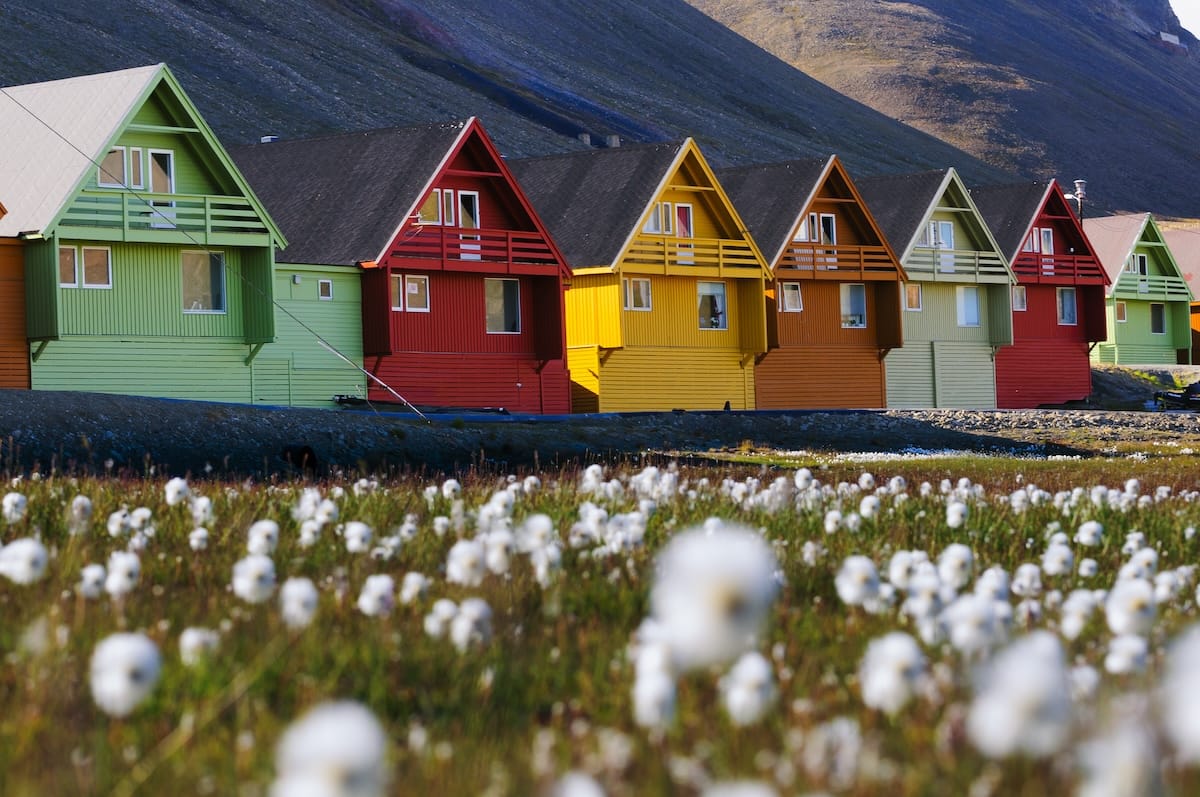
If you’re going there to learn more and to experience some of the world’s greatest nature and wildlife, do book that trip! It will be worth it, 100%.
If you’re going there for bragging rights and a few Instagram photos, do consider the impact your journey there could have and see if you could recreate a similar trip somewhere else.
Where to Stay in Svalbard
If you’re looking for the best places to stay in Svalbard, you can check out my Svalbard accommodation guide here. It lists my top picks and details where they are located.
If you have any additional questions, please reach out to me, and I will do my best to answer! I hope this guide helps you plan your visit to Svalbard!
More Svalbard Travel Guides
- Northern lights tours on Svalbard
- Where to eat in Longyearbyen
- Boat tours in Svalbard
- March in Svalbard
- Best time to visit Svalbard
- Svalbard Museum
- Wildlife tour in Svalbard
- Ice cave in Svalbard tour
- Evening at Camp Barentz
- Things to do in Svalbard
- Where to stay in Svalbard
- Svalbard’s wildlife
- Best Svalbard tours
- Svalbard in winter
- Snowmobiling in Svalbard
- How to see walruses in Svalbard
- Taking a Gruve 3 mine tour in Svalbard
- Failed trip to Pyramiden
- Svalbard Bryggeri tasting

Megan is a travel blogger and writer with a background in digital marketing. Originally from Richmond, VA, she now splits her time between Frankfurt, Germany and Arctic Finland after also living in Norway, Armenia, and Kazakhstan. She has a passion for winter travel, as well as the Nordic countries, but you can also find her eating her way through Italy, perusing perfume stores in Paris, or taking road trips through the USA. Megan has written for or been featured by National Geographic, Forbes, Lonely Planet, the New York Times, and more. She co-authored Fodor’s Travel ‘Essential Norway’ and has visited 45 US states and 100+ countries.

That was particularly useful, thank you so much for that – and for including information on wheelchair accessibility. Good on you.
Thanks so much Doug, we do try to include as much as possible when we can. If you have any tips that would help, please let us know.
Thanks for the the useful information. Can’t wait to get to Svalbard ;-)
Thanks so much for such a brilliant, comprehensive guide! Would you recommend Svalbard for solo travellers?
THanks for all this info on Svalbard, I have read all your posts. I hope to tag this trip on to the Lofotens for next year (moved from this year!) as I would love to do a few tours and of course see a polar bear. I have pinned for future use